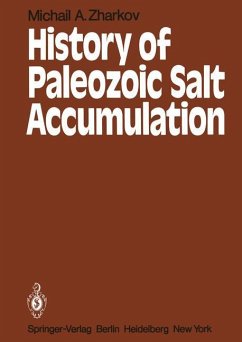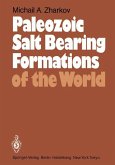The principal aim of the present work is to understand the evolution of halogenesis in the Paleozoic. To succeed in the study it was neces sary to make a general and systematic synthesis of data available on world-wide Paleozoic halogenic deposits and describe all known eva porite basins. This study succeeds the monograph Paleozoic Salt For mations of the World (Zharkov 1974a). The history of Paleozoic salt accumulation is based chiefly on evidence presented in the above monograph; this work should be considered as its direct continutation. The present work mainly aims at: (1) establishment of the num ber of both salt and sulfate basins and salt and sulfate sequences formed therein in the Paleozoic; (2) determination of the stratigraphic position of salt and sulfate sequences in separate regions, their distant correlation and recognition of stages of evaporite sedimentation during the Paleozoic; (3) determination of the volume and areas of distribution of halite, potash, and sulfate sedimentation within basins and on continents through periods, epochs, and ages of the Paleozoic to single out epochs of the most intense evaporite sedimentation; (4) reconstruction of paleogeography of continents to recognize stages of evaporite accumulation and paleoclimatic zones of halogenic sedi mentation in the Paleozoic; (5) understanding the evolution of eva porite sedimentation in the Paleozoic. The nomenclature used in the book should be explained.








